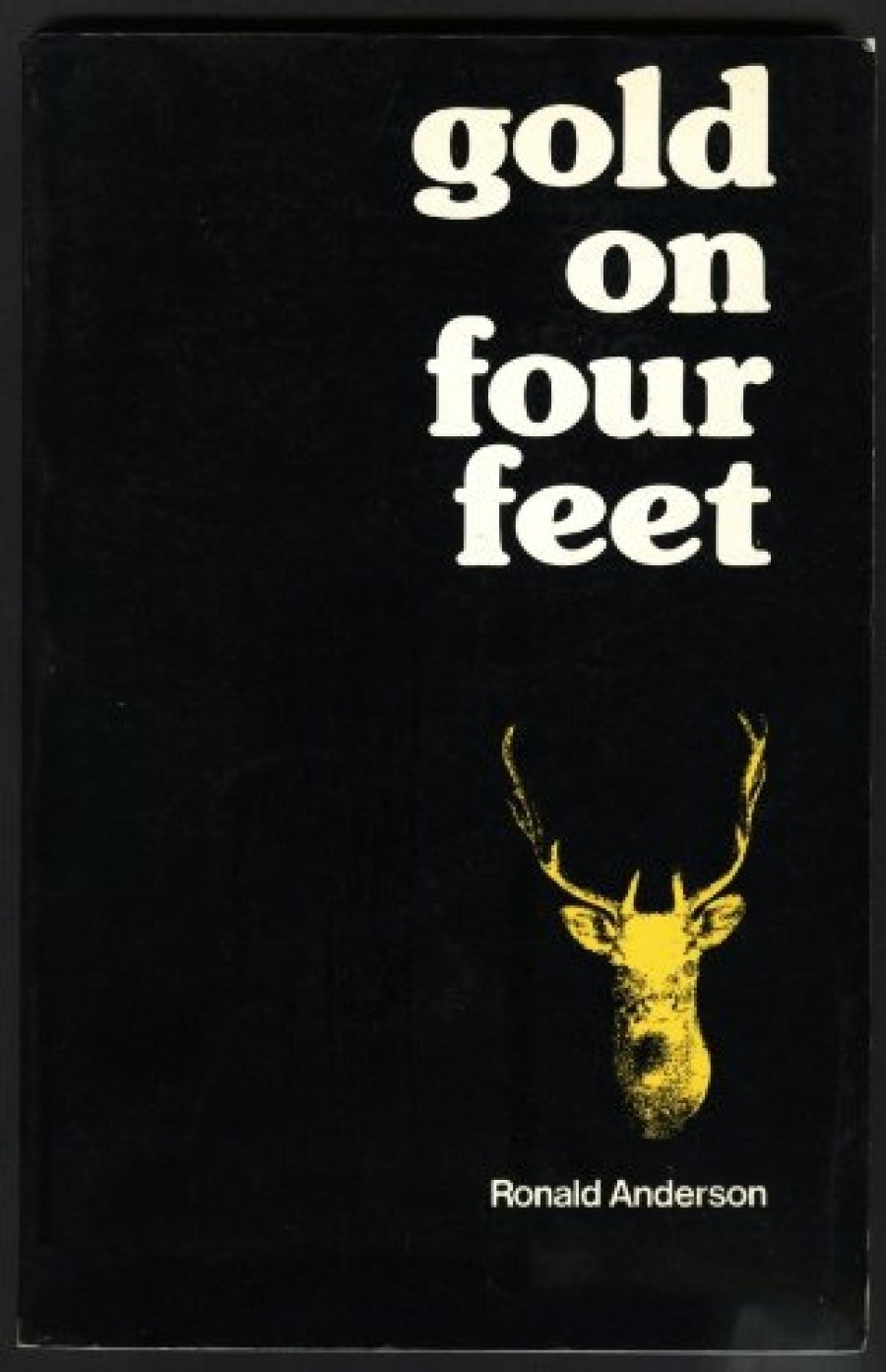
- Free Article: No
- Review Article: Yes
- Article Title: Hugh Dove reviews 'Gold on Four Feet'
- Online Only: No
- Custom Highlight Text:
Ronald Anderson’s latest book explores the potential for deer farming in Australia, and gives at least the initial information to someone wishing to establish a deer farm. By page eight of the book the profit potential of deer is already apparent. Their costs of production are relatively low, while product prices are extraordinary. For example, at the time of writing, New Zealand farmers were receiving $4.75 per kilogram for venison, some six or seven times the price of beef. As if this were not enough, there is the annual crop of velvet or immature antler, harvested without slaughter from the stags. Used as a component in Asian medicines, this returns no less than $110 to $150 per kilogram to the farmer or at least $300 per stag per year. Not satisfied? Then try the ‘by-products’ also obtained when the deer are slaughtered for venison. These range from mature antler (for jewellery) to frozen deer tails at $6 each (for culinary use) and from deer foetuses ($3 to $45 depending on stage of pregnancy) to deer penises! The last, which must be ‘...complete with testes and a tassel of hair…’, are graded (by length!) and frozen and return about $9 each to the farmer. In exploring the reasons for farming deer, Anderson raises one important issue early in the book and returns to it in several places. This is the hunter’s ‘...ambivalent attitude to deer…’ and to deer farming. To the hunting fraternity, says Anderson, deer are to be shot, not farmed. Unless, of course, they are farmed to provide stocks for shooting. The problem is that strong lobbying, based on such an attitude, would make it even more difficult than at present to obtain enough deer to stock a farm. The same attitude, prevalent in West Germany, led to a virtual embargo on the import of farm venison from New Zealand, in favor of ‘real venison’ shot in the wild, with obvious consequences for New Zealand’s deer farmers.
- Book 1 Title: Gold on Four Feet
- Book 1 Biblio: Ronald Anderson & Associates, $9.85 pb.
The New Zealand experience weighs heavily with Anderson. Apart from describing the New Zealand industry in some detail, it is obvious that be is much impressed and heavily influenced by a recent extended visit to New Zealand’s deer farms and research centres. I have seen some of these places, and can understand his enthusiasm for the animal and the industry.
Before launching into deer farming, warns Anderson, make sure your motives are right. A commercial approach is required, rather than one based on sentimental feelings for the beasts, a state Anderson delightfully describes as the ‘Bambi syndrome’. Given the motive is correct, the basic requirements (apart from money) are land, fences, yards and, of course, deer. My impression from this book is that the first three are no problem, but getting the nucleus herd of deer could be difficult. Of the wild deer species in Australia (there are six) Anderson suggests three could be considered for farming; the fallow, the rusa and the red deer, in rapidly decreasing order of availability. Herein lies a real problem. While the fallow is an abundant species, its extremely nervous and, at times, fractious nature make it a difficult or even doubtful candidate for farming. The less abundant rusa is more tractable, but not much is known about it. Despite this, it is finding increasing favor. The red deer, the ‘royal and noble beast’, is the best known and understood of the useful species, thanks to the work of the Rowett Research Institute in Scotland and, latterly, the important work of Ken Drew and his colleagues at New Zealand’s Invermay Agricultural Research Centre. Unfortunately, the research findings may not be as useful in Australia, where the red deer is virtually unobtainable.
Regardless of the species chosen, or how it is obtained, there will inevitably be a protracted and frustrating period of build up in herd size, as Anderson so rightly emphasises. What does a deer farmer do for money in the meantime? One answer is to couple deer farming with a more traditional agricultural pursuit, since these are usually compatible. Another is to take advantage of the velvet boom. The returns from the sale of this annual harvest of immature antler came like manna to New Zealand deer farmers, and may play the same role here. What’s more, Anderson suggests, the velvet boom may stave off a large-scale attempt by New Zealand deer farmers to export venison to the unexploited Australian market. Unable to export to West Germany, these farmers were looking to Australian venison sales to provide income, but the velvet boom has done this, and delayed slaughterings. Anderson urges that, while selling velvet themselves, Australian farmers should take advantage of the respite and cultivate the local venison market as insurance against the future.
Ronald Anderson is convinced that deer farming has a profitable future in Australia, and has established his own deer farm to prove it. I feel compelled to agree with him, and Gold on Four Feet will do much to persuade many others. I share the author’s hope that this small volume will be succeeded by ‘…a much more detailed, more scientifically based and more comprehensive work’. For that to come true, there will need to be an immediate program of research into deer and their production under Australian conditions. At the moment, there is all but none. In the meantime, for those who want to know more about deer and deer farming, this book remains a readable and personal introduction to an intriguing and hopefully lucrative industry.


Comments powered by CComment